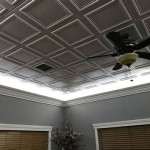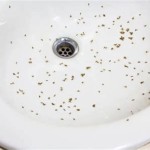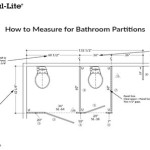How To Replace Bathroom Laminate Flooring
Replacing bathroom laminate flooring can revitalize a space, addressing issues like water damage, wear and tear, or simply an outdated aesthetic. The process requires careful planning, preparation, and execution to ensure a long-lasting and visually appealing result. This article provides a comprehensive guide to replacing bathroom laminate flooring, outlining the necessary tools, materials, and steps involved.
Planning and Preparation: Setting the Stage for Success
Before commencing the physical replacement, meticulous planning is crucial. This stage involves assessing the existing flooring, selecting suitable replacement materials, and accounting for environmental considerations within the bathroom.
Assessment of Existing Flooring: A thorough examination of the existing laminate flooring is the first step. Identify areas with visible damage such as bubbling, warping, or discoloration, which are often indicative of water damage. Inspect the perimeter of the floor, particularly around the toilet, shower, and sink, as these are common areas for moisture intrusion. Note the condition of the subfloor. If the subfloor is damaged or uneven, it will need repair before installing the new laminate.
Material Selection: Choosing the right type of laminate flooring for a bathroom environment is paramount. Opt for water-resistant or waterproof laminate options designed specifically for bathrooms. These laminates typically feature a tighter locking system and a water-resistant core material to prevent moisture from seeping through the seams and damaging the subfloor. Consider the thickness of the laminate, as thicker planks tend to be more durable and resistant to wear and tear. Also consider the AC rating (Abrasion Class) which indicates the durability of the laminate's surface. For a bathroom, a rating of AC3 or higher is generally recommended.
Gathering Tools and Materials: Assemble all necessary tools and materials before starting the project to ensure a smooth and efficient workflow. Essential tools include: a pry bar, hammer, utility knife, measuring tape, pencil, safety glasses, knee pads, a tapping block, a pull bar, a rubber mallet, and a saw (either a circular saw, jigsaw, or hand saw). Necessary materials include: the new laminate flooring, underlayment (especially if the laminate doesn't have it pre-attached), moisture barrier (plastic sheeting), shims, spacers, and transition strips. Caulking, specifically waterproof bathroom caulk, will also be needed.
Safety Precautions: Prioritize safety throughout the project. Wear safety glasses to protect your eyes from debris, and knee pads to cushion your knees while working on the floor. Ensure adequate ventilation in the bathroom by opening windows or using a fan to minimize exposure to dust and fumes. Wear a dust mask if cutting laminate generates a significant amount of dust. Disconnect any electrical outlets or fixtures in the immediate work area to prevent electrical hazards.
Removing the Old Flooring: Preparing the Foundation
The removal process requires careful execution to avoid damaging the subfloor. A systematic approach will minimize the risk of injury and facilitate the installation of the new laminate flooring.
Removing Fixtures: Start by removing any fixtures that could obstruct the removal process. This may include the toilet (which requires disconnecting the water supply and carefully removing the bolts), the vanity (if it's resting directly on the floor), and any baseboards or trim. Label and store screws and bolts to ensure proper reinstallation later. If removing the toilet, plug the drain opening with a rag to prevent sewer gases from escaping.
Removing the Old Laminate: Begin by removing the baseboards or quarter-round molding along the perimeter of the room using a pry bar. Work carefully to avoid damaging the walls. Once the trim is removed, use the pry bar to lift the first row of laminate planks. The seams are often the weakest points, so focus on lifting at these junctions. Continue removing the planks, working your way across the room. Be mindful of any staples or nails that may be holding the laminate in place. Use a utility knife to score along the edges of planks that are glued down, to facilitate removal. While removing the flooring, inspect for signs of mold or excessive moisture. If present, address these issues before proceeding.
Subfloor Preparation: After removing the old laminate flooring, thoroughly inspect the subfloor. Look for signs of damage, such as soft spots, cracks, or mold. Repair any damaged areas before installing the new laminate. Use a level to check for unevenness. If the subfloor is uneven, use a self-leveling compound to create a smooth and level surface. Clean the subfloor thoroughly, removing any debris, dust, or remnants of adhesive. A clean and level subfloor is essential for proper laminate installation.
Installing the New Laminate Flooring: Ensuring a Professional Finish
The installation phase is where precision and attention to detail are paramount. Following the manufacturer's instructions and ensuring proper alignment will result in a durable and aesthetically pleasing floor.
Installing the Moisture Barrier: Before installing the laminate, lay down a moisture barrier to protect the subfloor from moisture. Overlap the edges of the plastic sheeting by at least 6 inches and tape the seams to create a continuous barrier. This is particularly important in a bathroom environment where spills and humidity are common.
Laying the Underlayment: If the laminate flooring does not have a pre-attached underlayment, install it at this stage. The underlayment provides cushioning, sound insulation, and helps to level minor imperfections in the subfloor. Roll out the underlayment and tape the seams to create a seamless surface. Ensure the underlayment is properly aligned and covers the entire area where the laminate will be installed.
Laminate Installation: Begin installing the laminate flooring along the longest straight wall in the bathroom. Use shims or spacers to maintain a consistent expansion gap (typically ¼ to ⅜ inch) between the laminate and the wall. This gap allows for the natural expansion and contraction of the laminate due to changes in temperature and humidity. Follow the manufacturer's instructions for the specific locking system of your laminate flooring. Typically, this involves angling the planks and clicking them together. Use a tapping block and a rubber mallet to gently tap the planks into place, ensuring a tight and secure fit. Stagger the end joints of the planks to create a more visually appealing and structurally sound floor. Use a pull bar to tighten the seams in tight spaces, such as along walls or under door frames.
Cutting Laminate: Cutting laminate flooring accurately is essential for a professional finish. Use a circular saw, jigsaw, or hand saw to cut the planks to size. When cutting laminate, always cut with the finished side facing up to prevent chipping. For intricate cuts around pipes or fixtures, use a jigsaw to create precise openings. Measure carefully and double-check your cuts before installing the planks.
Finishing Touches: Once all the laminate planks are installed, remove the shims or spacers. Install transition strips at doorways to create a smooth transition between the bathroom floor and adjacent flooring. Reinstall the baseboards or quarter-round molding along the perimeter of the room to conceal the expansion gap. Apply a bead of waterproof bathroom caulk along the baseboards, around the toilet, and around any other fixtures to seal the edges and prevent water from seeping underneath the flooring. Allow the caulk to dry completely before using the bathroom.
Maintaining Your New Laminate Flooring: Ensuring Longevity
Proper maintenance is crucial to extending the life and preserving the appearance of your new bathroom laminate flooring.
Regular Cleaning: Clean the laminate flooring regularly with a damp (not wet) mop and a pH-neutral cleaner specifically designed for laminate floors. Avoid using abrasive cleaners, scouring pads, or steam cleaners, as these can damage the surface of the laminate. Wipe up spills immediately to prevent staining or water damage. Place mats or rugs in high-traffic areas to protect the flooring from wear and tear.
Preventing Water Damage: While water-resistant laminate is designed to withstand moisture, it's still important to take precautions to prevent water damage. Avoid letting water sit on the floor for extended periods. Address any leaks or spills promptly. Ensure proper ventilation in the bathroom to reduce humidity levels. Consider using a dehumidifier if humidity is a persistent problem.
Protecting the Surface: Protect the surface of the laminate flooring from scratches and dents. Use furniture pads under the legs of chairs and tables. Avoid wearing shoes with hard soles or high heels on the laminate floor. Consider using a floor protector mat under rolling office chairs. Regularly sweep or vacuum the floor to remove dirt and debris that can scratch the surface.

How To Install Vinyl Plank Flooring In A Bathroom Fixthisbuildthat

How To Install Vinyl Plank Flooring In A Bathroom Fixthisbuildthat

Lighting And Laminate Flooring Install In Our Bathroom Remodel

How To Install Vinyl Plank Flooring In A Bathroom Fixthisbuildthat

How To Install Vinyl Plank Flooring In A Bathroom Fixthisbuildthat

How To Install Vinyl Plank Flooring In A Bathroom Fixthisbuildthat

How To Install Vinyl Plank Flooring In A Bathroom Fixthisbuildthat

How To Cut Flooring Around A Toilet Luxury Vinyl Plank Bathroom Installation Calibamboo

How To Install Vinyl Plank Flooring In A Bathroom Fixthisbuildthat

How To Install Waterproof Laminate Flooring Twenty Oak
Related Posts







